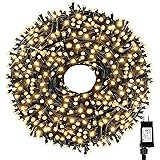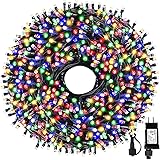Spot the fake: From hair, to cake, AI-generated images can create unrealistic expectations
Clients have been showing their hairdressers photos of celebrities like Jennifer Aniston for decades. Now, they’re also bringing in AI-generated images too.
Dean Allan, owner and stylist at the Beauty Parlour on Whyte Avenue in Edmonton, said it’s more and more commonplace that when a client comes in for a haircut, they show him a photo that was generated by artificial intelligence. He says most people can tell that it’s not real — for now.
“I think they’re just gonna get better,” Allan told CBC’s Edmonton AM.
“I would just really honestly say to anyone who is a hairstylist or is going to use any kind of hair inspo — whether it is AI generated or not — it’s hair inspiration … that’s all it is.”
Edmonton AM7:45People turning to AI generated photos for hair inspiration
Photos generated by artificial intelligence are everywhere, and hair inspiration photos are no different. Dean Allan is a hairstylist at The Beauty Parlour.
Allan said the need to manage client expectations, and highlight certain aspects of AI-generated hair may be unattainable.
“Usually it’s got a sheen. It’s thicker than the average person’s hair.”
It’s not the first time that new technology has brought in hair that’s unachievable. Allan remembered a rose gold trend a few years ago. He said it turned out to be based on an image with different filters and not reflective of a real hair colour.
“As a hairstylist, you have to stand your ground. And if you do not feel comfortable trying to achieve what that client wants, then you need to step back and say ‘you’re not going to be happy with what I produce.’ “
Fake cake
The hair salon isn’t the only unexpected place artificial intelligence is shifting things, it’s also changing the way people ask for custom cake decorations.
Olivia Hua, owner of Cake Couture in west Edmonton, said she’s also seeing an increase of AI-generated requests. And they can get weird.
“We did get one this week that was cat cupcakes and they looked almost like literal cats, molded into a cup. It was bizarre.”
“There’s a lot of crazy things that we can see: highly detailed elements in cakes or even things that seem impossible, defying gravity a little too hard.”

She said Facebook and Pinterest seem to be the biggest culprit, where customers go for inspiration and can inadvertently get their heart set on a design that isn’t real.
Both Hua and Allan agree that AI can be a tool to inspire creativity and help clients find new ideas. But Hua said that the technology’s innovation seems to be limited by the fact that it recycles images and ideas that already exist on the internet.
“I do find they start becoming formulaic and they are kind of the same images over and over. And I hope that doesn’t erase our creativity.”
She said some of those formulaic elements she sees can be a giveaway an image is fake, like flowers or muffin wrappers that don’t look quite right. Or, it’s simply too perfect.
“It always looks too clean. I feel like life is a little bit more messy than what they’re portraying.”
View original article here Source









